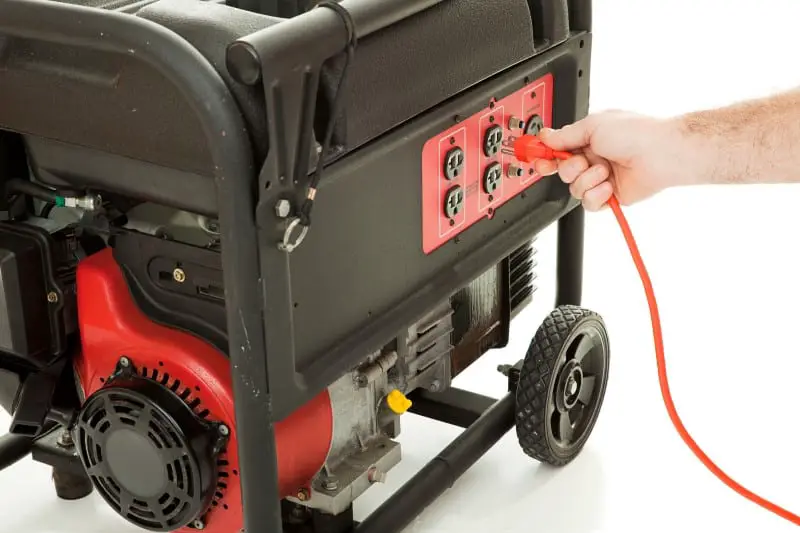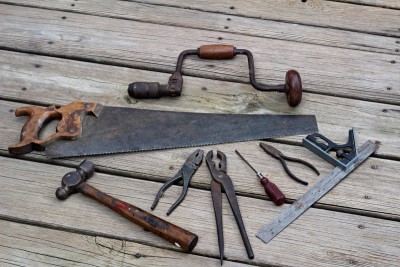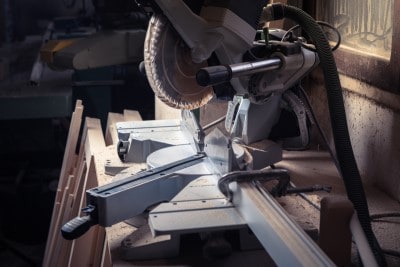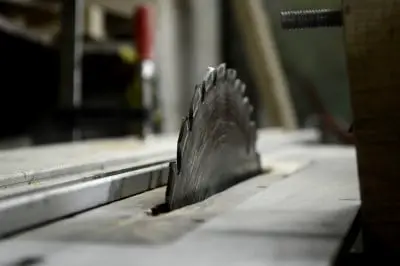Table Saw’s are one of the most popular power tools today, found in both amateur and pro handymen’s arsenals alike. No matter what the task at hand is, a table saw is always a safe bet for most wood cutting jobs, allowing for great accuracy and desirable precision.
A major downside of the table saw (as well as most electric saws) is the need for the tool to be plugged in; sometimes, a job arises where a table saw must be used far away from any outlet or plug, such as when cutting deep in the woods. Also, in extreme circumstances, you may eventually require the need to use a table saw when the power is out – in these cases, owning a generator is a great idea.
When it comes to running a generator for a table saw, it should be capable of at least 1800 running watts and 3500 starting watts. That said, the power required can vary greatly; depending on your desired uses, need for portability, or other factors, you may want a more powerful generator.
Choosing a generator can be very tricky, and the generator market is somewhat confusing; for the sake of this article, we will only focus on portable generators, since you probably want one that you can bring outdoors or deep in the woods.
In this article, we will shed some light on the types of portable generators, the difference between running watts and starting watts, the different power level of generators, how much electricity a table saw really uses, and the best portable generators for a table saw available for purchase.

Types of Generators
When it comes to portable generators, there are three common types of power sources.
Gas-Powered
Most portable generators are gas-powered.
This is the most common and arguably the best type of portable generator, reason being that gas is easy to find in case of emergency and many builders or woodworkers will typically have at least some gas in storage.
In times of emergency, gas-powered generators are the most ideal.
Battery-Powered
Some portable generators are powered by battery; although cheaper than gas-powered generators, it can defeat the purpose since these specific batteries can be difficult to aquire in the case of emergency.
For example, if your battery runs out while you are doing a woodcutting job in the woods, then you will have to find a hardware store that carries your specific battery.
Many woodworkers prefer gas-powered generators because gas is easy to come by or store, whereas the batteries needed for these types of generators are not.
Solar-Powered
Some portable generators can charge and run on solar power; while this is ideal for environmental reasons, it is not as practical as gas-powered or even battery-powered generators.
The reason for this is because you are relying on the sun for charge; typically, generators are used if you are working away from an outlet or during times of power-outages. So, if you get unlucky and have low charge but there is no sun, you will not be able to use this generator.
That said, if you are environmentally conscious, solar-powered generators are a great option, although they are harder to come by and generally have a higher initial-cost than the other two types of portable generator.
Running Watts vs Starting Watts
Most generators have a watt number in their title, giving an idea of their power and capabilities.
However, this is often confusing because there are two difference types of figures associated with generators; running watts and starting watts.
Starting watts are, as the name suggests, the amount of voltage it takes to start your power tool; running watts is how much power is needed to keep it running.
In order to run from a generator, power tools (such as a table saw) need the generator to have enough starting watts in order to power on the tool
For example, if a table saw requires 3000 watts, then the generator must have starting watts of at least 3000 – otherwise, it may not be able to run successfully.
Generator Power Levels
Generators have varying level of power (running and starting watts), prices, sizes, etc.
Here is a basic breakdown of the different generator power levels and approximately how much you might pay for each. Remember, the amount of watts specified in the title of a generator refers to running watts, not starting watts.
Note: Obviously, these prices will vary greatly depending on where you buy them from, the brand name, quality, and other factors.
2000-Watt
2000-Watt generators are on the smaller side, and are typically the most portable and, as you can expect, the cheapest.
Usually, 2000-watt generators are gas powered, although you can find some that are either battery powered or solar powered.
Generally speaking, you can expect to pay around $100-200 USD.
5000-Watt
If you are doing any serious construction, you will need at least a 5000-watt generator; also, if you are doing woodwork and need to run multiple tools at a time, this is the bare minimum power of generator you need.
5000-watt generators are bigger than the 2000-watt, although they are still somewhat portable.
These generators sell for around $500-1,000 USD.
7000-Watt
This class of generator is more heavy duty than the others, and you will probably not want to take this on a camping trip due to lack of portability (these generators can weigh up to 200 pounds).
That said, if you require some serious power for your woodworking, then this will do the trick.
7000-watt generators typically sell for around $1,000-1,500 USD.
10,000-Watt
These are heavy-duty generators that can single-handedly power an entire job site; this is as big as you can go before portability goes out the window. Although 10,000-watt generators can still be used on-the-go, this is definitely overkill if all you need is to run a table saw.
10,000 watt generators will cost $1,000 USD at the very least, but will likely be around $2,000 or more.
How Much Electricity Does a Table Saw Use
The amount of electricity needed to run a table saw will vary.
As alluded to previously, you cannot rely on the wattage number in a generator’s name to determine if it’s enough to run your table saw; the watts in a generator’s title refer to running watts, not starting watts.
Usually, you will be able to figure out exactly how much voltage your table saw needs to run by checking the instruction manual or package contents; if you don’t have access to either, you can look up your Table Saw’s model number online and you will find the required wattage.
Generally speaking, a table saw will need to be at least 3500 watts in order to power it on; that said, it is a safe bet to go higher, preferably a 5000 watt generator.
A 5000-watt portable generator will be ideal because it is small enough to take with you if you need to use your table saw outdoors, and it is enough to handle another tool as well if needed.
Any generator of 7000-watts or more will be overkill when it comes to only powering a table saw.
Best Generators For A Table Saw
If you need a great portable generator solely to power your table saw, here are a couple affordable options for you:
- DuroMax XP4000S
This DuroMax model is a great option for a portable generator, especially for powering a table saw specifically; 4000 starting watts is the perfect amount of needed voltage.
This generator runs on gas, which is ideal for most circumstances. Also, it is only around 92 pounds, so it is very portable.
DuroMax portable generator is best for budget.
2. DuroStar DS4850EH
The DuroStar is another gas-powered generator, and is a great option for anyone needing to use it for table saws.
This portable generator is a bit more heavy duty, with 4,850 starting watts and 3,850 running watts; it will be able to handle any table saw (and then some).
Since it is more powerful, it weighs around 125 pounds; it is still portable, but slightly less so than the DuroMax.
DuroStar is the best generator for table saw.
Read more:











